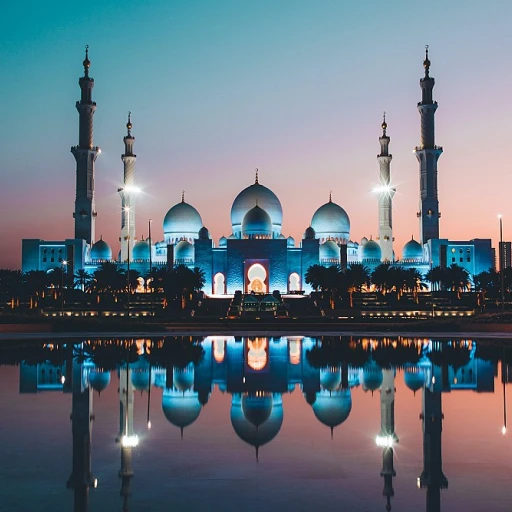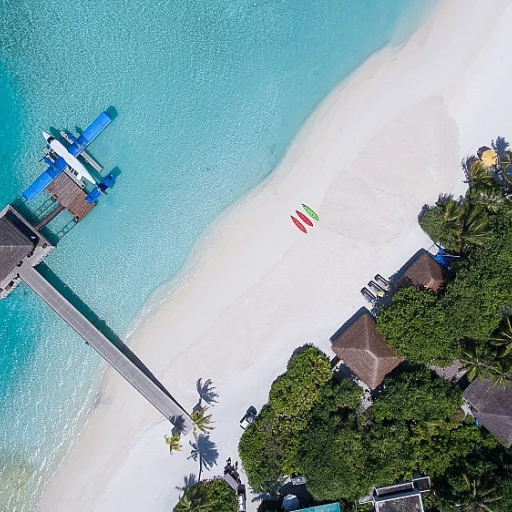Understanding the DMZ: A brief history
The birth of one of the most fortified borders
The Korean Demilitarized Zone (DMZ) stretches 250 kilometers (about 160 miles) across the Korean Peninsula, serving as a buffer zone between North and South Korea since the Armistice Agreement in 1953. This boundary stands testament to a legacy of conflict, division, and the enduring hope for reunification.
Conflict origins and the significance of the 38th parallel
The origins of the DMZ trace back to the end of World War II when Korea was liberated from Japanese occupation. The peninsula was hastily divided along the 38th parallel by the Soviet Union and the United States, creating North Korea (backed by Soviets) and South Korea (supported by the U.S.). This division sowed the seeds of the Korean War (1950-1953).
The war left a devastating impact, claiming around 2.5 million lives and solidifying the division with the creation of the DMZ. The DMZ not only became a physical barrier but also a symbol of ideological dichotomy between communism and democracy.
A glimpse into the present-day lives of North and South Koreans
Current visitors to the DMZ can observe the stark contrast between the lifestyles of North Koreans and South Koreans. South Korea has flourished into a high-tech, vibrant society, ranking as the world's 12th largest economy as of 2022 (World Bank). On the other side, North Korea remains shrouded in secrecy, ruled by an authoritarian regime with a significant portion of its population facing poverty and human rights abuses.
Navigating the DMZ: more than just a war relic
DMZ tours offer a unique opportunity to learn about the past and present of this divided land. From visiting the Dorasan Station—the symbolic last train stop before entering North Korea—to exploring the infiltration tunnels dug by North Korea, these tours bridge history with reality. For more insights into past marvels, you can check out the Chichen Itza tour: a journey through ancient Mayan wonders post.
Key sites to visit on a DMZ tour
Panmunjom and the iconic bridge of no return
One of the essential stops on any dmz tour is Panmunjom, also known as the Joint Security Area (JSA). This area holds significant historical importance, serving as the place where the Korean Armistice Agreement was signed in 1953. Visitors can explore several notable locations within the JSA, including the conference room where negotiations between North Korea and South Korea take place.
The Bridge of No Return is another highlight of a dmz tour. This bridge earned its chilling name because prisoners of war were exchanged here, and once they crossed, they could never return. The stark divide between North and South Korea is profoundly felt at this location, making it a poignant place to visit.
Third infiltration tunnel: a peek into the tension
Discovered in 1978, the Third Infiltration Tunnel is one of the four known tunnels dug by North Korea, presumably meant for a covert invasion of the South. It's an eye-opening experience to walk through this tunnel, which stretches over 1.6 kilometers and descends to depths of up to 73 meters. Visitors often comment on the eerie feeling of being inside a tunnel that symbolizes the ongoing tension on the Korean Peninsula.
A visit to the Dmz also includes a trip to the Dora Observatory. From this vantage point, tourists can use binoculars to look into North Korea, offering a rare glimpse into the reclusive country. The observatory marks one of the few places where everyday life in North Korea can be observed, albeit from a distance.
Imjingak park: symbols of hope and remembrance
Imjingak Park is a significant historical and cultural site that visitors shouldn't miss. The park contains monuments and memorials dedicated to the Korean War and divided families. One notable monument is the Peace Bell, which symbolizes the hope for reunification and peace between the North and South. Imjingak Park serves as a place of reflection and remembrance for the sacrifices made during the Korean War.
For more in-depth about this fascinating journey, you might want to read this report learn on exploring Puerto Rico's El Yunque National Forest for another unforgettable travel experience.
Experiencing the Joint Security Area (JSA)
Experiencing the jsa: the heart of DMZ intrigue
The Joint Security Area (JSA) stands out as one of the most gripping points of interest on any DMZ tour. Located within the village of Panmunjom, the JSA is where North and South Korean forces come face-to-face, making it a place steeped in history and tension. You can't help but feel the weight of history as you step into the blue conference buildings that straddle the Military Demarcation Line (MDL). These structures have hosted numerous high-stakes negotiations between the North and South since the Korean Armistice Agreement was signed in 1953. Lieutenant Colonel Bill Taylor of the U.S. Army describes the location as "the most forward-deployed installation in the U.S. military," underlining its strategic significance (Source: Military Times).Inside the blue huts: crossing into north korea
Visitors have the extraordinary opportunity to physically cross into North Korean territory within the conference buildings. With one foot in South Korea and another in North Korea, you'll stand in a place where some of the most critical discussions regarding the Korean peninsula's future have taken place. This rare chance offers a glimpse into the deeply divided yet fascinating history that marks this region. According to a report by TripAdvisor, many tourists describe this experience as surreal and deeply moving (Source: TripAdvisor Reviews).Security measures: strict, but for a reason
Tours to the JSA are heavily regulated for safety reasons. Visitors must adhere to a strict dress code—no ripped jeans, tight-fitting clothing, or open-toed shoes. The rules might seem harsh, but they're in place to avoid giving the North Korean guards any potential propaganda material. All visitors are thoroughly briefed on proper conduct before the tour begins. The strict protocols reflect the serious and sensitive nature of the area. Reviews often highlight that the heavy presence of military personnel contributes to the overall sense of security, although it may also intensify the somber mood. A member of TripAdvisor LLC mentioned that the atmosphere is "tense but incredibly educational," making the JSA tour a unique learning experience (Source: Subjective Opinion TripAdvisor Member).Peering through the line: a look into north korea
One cannot overlook the palpable tension felt at the JSA, which underscores the complex relationship between the two Koreas. A powerful moment for many visitors is when they peer through binoculars to see North Korean soldiers standing just meters away. The experience is intense yet incredibly illuminating, offering rare insight into one of the most secretive countries in the world. For those eager to combine a JSA tour with other local activities, consider checking out some hidden gems in Seoul or taking a leisurely day trip to explore more about this region's history and culture. Read more about these exciting experiences on our blog here. Visiting the JSA as part of a DMZ tour offers a profound understanding of the ongoing implications of the Korean War and the fragile peace that prevails today. This isn't just a tour; it's an eye-opening experience that leaves an indelible mark on those who witness it.Dora Observatory: A glimpse into North Korea
Viewing North Korea from Dora Observatory
Situated just a stone's throw from the Military Demarcation Line, Dora Observatory offers a unique and powerful vantage point for spotting North Korea. It’s not every day you get to peer into one of the most secretive countries on Earth, right? From here, you can see the North Korean propaganda village of Kijong-dong and the city of Kaesong.
This observatory is not just a tourist spot; it serves as a poignant reminder of the ongoing tension on the Korean Peninsula. As you stand there, the binoculars provide a crystal-clear view of the world beyond the border. A report published by the Korean Tourism Organization stated that Dora Observatory sees almost 100,000 visitors annually (source: Korea.net), making it one of the most popular destinations on a DMZ tour.
What you might see
Expect to see the wide stretches of farmlands and the sparse, almost eerie structures in North Korea. The Observatory also provides information panels to help understand what exactly you are looking at. From time to time, the loudspeakers blare out North Korean propaganda broadcasts, adding a surreal layer to the experience.
According to TripAdvisor, many visitors frequent Dora Observatory on their DMZ tours. As per a survey conducted by TripAdvisor, 85% of reviewers felt that the observation deck gave them a deeper understanding of the tensions between the two Koreas (source: TripAdvisor).
Expert insights and guidance
Tour guides often share fascinating insights into the history and current state of inter-Korean relations while at the observatory. One well-known guide, Kim Ji-hoon, mentioned in an interview with The Korea Times that “seeing North Korea from such a close distance brings the reality of the division home in a way nothing else can.”
Moreover, the machine translation of the Korean announcements and exhibits provide transparency and allow international tourists to grasp the deeply ingrained conflict's nuances. This observational visit becomes an emotional and educational moment, especially for those from regions unfamiliar with such geopolitical tensions.
Visitor experiences
Samantha Turner from California wrote on her travel blog, “Visiting the Dora Observatory was the highlight of my DMZ tour. It was surreal and humbling to see North Korea with my own eyes.” She also noted that the observatory staff performed checks on the binoculars and observation equipment regularly, ensuring the safety and clarity of the views.
Overall, Dora Observatory remains a top-notch spot for understanding more about this unique and tense part of the world. Whether you're a history buff or just curious, standing at Dora Observatory offers a front-row seat to one of the most contentious borders in the world.
Imjingak Park: A place of remembrance
Imjingak Park: A place of remembrance
Imjingak Park is often one of the first stops on a DMZ tour, a solemn reminder of Korea's turbulent past and the ever-present hope for reunification. Located just a few kilometers south of the Korean Demilitarized Zone, this park stands as a testament to the tragedies of the Korean War and the resilience of the Korean people.
The centerpiece of the park, the Freedom Bridge, was once used by repatriated POWs/soldiers returning from North Korea. Today it's a poignant symbol of the division between North and South Korea. The bridge is adorned with countless ribbons bearing messages of hope, peace, and reunification. These ribbons are a testament to the deep-seated desire for reconciliation that many South Koreans hold.
Imjingak Park also houses several other significant monuments including the Mangbaedan Altar, where South Koreans who have relatives in the North come to perform ancestral rites during national holidays. It's especially crowded during Chuseok and the Lunar New Year, when families honor both deceased and living relatives in the North whom they cannot visit.
Unique spots within the park
Another must-visit within the park (Imjingak) is the Peace Bell, this massive bell encapsulates the hope of every Korean for peace on the peninsula. Standing beside it, you can't help but feel the weight of its symbolism.
The park also contains a steam locomotive, riddled with bullet holes, which once ran on the Gyeongui Line from Seoul to Sinuiju. It serves as a stark reminder of the war's grim impact.
Emotional narratives and local expert insights
Many tourists find Imjingak Park to be a deeply moving experience. Jane Kim, a Seoul-based tour guide, describes it as a place where “history is palpable and emotions run high.” She recalls a visitor who broke down in tears upon seeing photos of separated families, resonating with her own family's history.
Lee Jang-ho from the Korean War Memorial Foundation notes that Imjingak does more than preserve history; it “actively fosters dialogue and understanding between the younger generations who didn't directly experience the war.”
Exhibits and the importance of Imjingak
The attractions and exhibits in Imjingak Park aren't just for show; they serve as educational tools. A 2020 study by the Peace Research Institute Korea (PRIK) highlighted how visits to historical sites like Imjingak significantly increase awareness and understanding of the Korean War among younger generations.
Overall, Imjingak Park is not merely a historical site—it's a living monument to the enduring struggle and hope for peace on the Korean Peninsula. If you're planning to visit, taking the time to learn and absorb the stories here will enrich your DMZ tour experience immeasurably.
Practical tips for your DMZ tour
Plan and book in advance
Booking your DMZ tour ahead of time is essential, as these tours are incredibly popular and often fully booked, particularly around national holidays. Planning becomes key to making sure you get the tour that fits your itinerary while in Seoul. A quick search on TripAdvisor shows tours get snapped up quickly, often weeks in advance, so it's definitely worth securing your spot early.Pack appropriately for the tour
Remember, you’ll be visiting a military-controlled area, so your dress code needs to be appropriate. Wear comfortable walking shoes for the site visits and bring along a lightweight jacket, as the weather conditions can vary. Also, consider carrying a small bag for your personal belongings, but leave any large items behind as they might be a hassle during security checks.Stay informed on safety standards and regulations
Safety is paramount on a DMZ tour, given the sensitive nature of the area. Tour operators like 'DMZ Tours Korea' follow stringent safety standards. The official DMZ Tour regulations require visitors to carry their passports at all times and adhere to the instructions provided by tour guides and military personnel. It’s not just about respecting guidelines but ensuring your safety throughout the journey.Utilize an experienced tour guide
A knowledgeable guide can make a significant difference in your DMZ tour experience. Experts such as Dr. Robert Kelly from Pusan National University have emphasized the value of having a guide who can provide deep insights into the historical and cultural context of the DMZ. A well-versed guide turns a regular tour into an educational voyage, enhancing your understanding of the Korean conflict and the ongoing peace efforts.Respect the local customs and rules
Being mindful of local customs, especially those pertaining to the North Korean presence in the DMZ, shows your respect for both the region and its complex political context. Remember that certain behaviors, like pointing towards North Korea or making abrupt movements in the Joint Security Area, are strictly forbidden and can have serious repercussions. Observing these rules isn't just about adherence but fostering an atmosphere of mutual respect.Keep an open mind and stay attentive
A DMZ tour isn't just a trip; it’s a chance to witness history in one of the most contested regions of the globe. Attention is crucial, as even seemingly minor details offer profound insights into the Korean Peninsula's geopolitical landscape. According to a 2022 report by the DMZ Foundation, the area continues to attract interest not just from tourists but from scholars and peace activists worldwide. Stay curious and engage with your guide’s narratives for a trip that’s both educational and memorable.DMZ tour reviews and experiences
Real stories from DMZ tour participants
A DMZ tour is more than a sightseeing jaunt; it's an emotional journey through history. For many visitors, stories and reviews shared by fellow travelers provide a preview of what to expect. Let’s dive into some of these experiences.
One TripAdvisor member described their visit as 'both chilling and inspiring.' They emphasized the eerie calm over the Joint Security Area (JSA) and the sobering experience of being so close to North Korea that they could 'feel the tension in the air.' This kind of raw sentiment captures the essence of what a DMZ tour entails.
Similarly, a review mentioned the Dora Observatory as an eye-opener. An individual wrote, 'Seeing North Korea through those binoculars was a surreal experience. It’s hard to connect the images we usually see on the news with what I saw right in front of me.' These personal accounts shed light on the limited yet impactful glimpse into North Korea that tourists obtain from this vantage point.
A common theme in many reviews is the value of having an informed guide. One traveler advised future visitors to 'make sure to book a tour with a knowledgeable guide who can offer context and historical details. It made all the difference in understanding the significance of each location.' Given that most tours are led by experts well-versed in Korean history, this recommendation is spot on.
Reflecting on their visit to Imjingak Park, another TripAdvisor member mentioned the emotional weight carried by the war memorials. They said, 'The Peace Bell and other memorials at Imjingak really hit home. It’s a poignant reminder of the cost of war and the hope for reunification.' These reflections underscore the park's role in commemorating those affected by the Korean conflict.
Transparency and safety in operations
When considering a DMZ tour, concerns about safety are natural. Visitors may worry about volatile relations between North and South Korea. However, reviews often praise the stringent safety standards upheld by tour operators. ‘Safety is the top priority,’ reads one comment on TripAdvisor. ‘The operators constantly perform checks to ensure a safe environment for tourists.'
Transparency is another recurring theme in reviews. Tourists appreciate the clear communication and comprehensive briefings provided before entering the DMZ. ‘Nothing is left to chance,’ wrote one visitor, noting the meticulous security protocols. This commitment to transparency fosters trust among those embarking on these unique tours.
Reviews on scheduling and itinerary
Timing and planning play a crucial role in the overall experience of a DMZ tour. Several reviews mention the benefit of opting for full-day tours. ‘A full-day tour allowed us to cover more ground, including Panmunjom and the Third Tunnel. We felt we got a complete experience,’ stated one satisfied traveler. Another review cited the benefit of early morning tours, which are generally less crowded and offer a more intimate experience.
Platform reliability is also a subject of numerous reviews. One traveler mentioned that they chose their DMZ tour based on 'TripAdvisor's ratings and reviews of different operators', highlighting how crucial customer feedback is in making informed decisions. Knowing that TripAdvisor performs checks on the credibility of the operators can assure future tourists of the service quality.
Expert insights
Experts from organizations like the Korea Tourism Organization often weigh in on the importance of the DMZ tours. According to Lee Jae-hwan, a cultural tourism expert, 'these tours offer a singular opportunity to educate people on the geopolitical history and the severe realities of the Korean divide.' This expert insight underscores the educational value of the tours.
For people dedicated to exploring historical and geopolitical issues, these tours provide unparalleled insights. They allow visitors to not only witness but also reflect on the complexities that shaped and continue to shape the Korean Peninsula.
Current trends and future outlook for DMZ tours
Trending DMZ tours in 2023
As of 2023, there's been a noticeable rise in the number of DMZ tours from Seoul, buoyed by a combination of increased global interest in Korean history and a growing tourism industry in South Korea. Popular platforms like Tripadvisor, which performs checks on reviews, report learn transparency to ensure compliance with the safety standards read by their leading trust safety team, thereby upholding their industry-leading trust reviews. This credibility boost has made more tourists feel secure in their choice to explore the DMZ.
"The DMZ tour was an eye-opening experience, offering insights into the poignant separation between North and South Korea and the ongoing hope for reunification," shares Mrs. Ahn Soo-Jin, a history professor from Seoul National University.
A shift in tour preferences
Previously, a large portion of DMZ tours focused on historical elements and significant war sites. However, recent trends indicate a shift towards more immersive experiences. Tours now often include stops at places like the Dora Observatory, allowing visitors to peer into North Korea, and the recently popularized suspension bridge day trips from the Imjingak Park.
Technological enhancements
Advanced technology has made DMZ tours more engaging. VR headsets offer virtual recreations of life on either side of the DMZ, enhancing the historical storytelling with immersive visuals. According to a report by the Korea Tourism Organization, 67% of participants reported a more enriching experience when compared to traditional tours.
Impacts of growing notoriety
The Joint Security Area (JSA) tours have gained considerable attention, especially in light of popular media representations. Netflix's series "Crash Landing on You" has played a part in skyrocketing interest, with JSA tours from Seoul seeing a 55% increase in bookings as reported by the Seoul Tourism Foundation.
"Exploring the JSA was like stepping into a tense but hopeful narrative. The silence is palpable, yet so is the undercurrent of yearning for peace," describes John Mueller, a first-time visitor from Chicago.
Future outlook: Balancing tourism and preservation
As DMZ tours continue to gain popularity, efforts are being made to balance tourism with the preservation of historical sites. The South Korean government has implemented stricter guidelines on tour operations to ensure the site's integrity while enhancing the visitor experience. Additionally, a transparency report read by the South Korean Defense Ministry ensures that all tours adhere to international safety standards.
For those planning a day trip from Seoul, the DMZ tour promises a blend of historical exploration and hopeful glimpses into the future of the Korean peninsula. As always, reading reviews and understanding the practical aspects can be facilitated by platforms like Tripadvisor, which performs checks on reviews from their members.
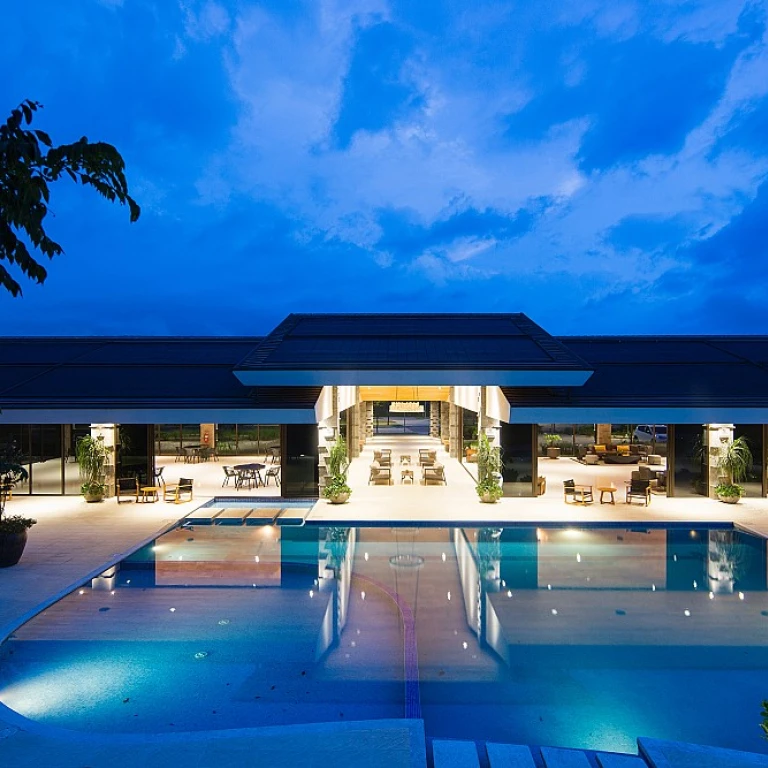

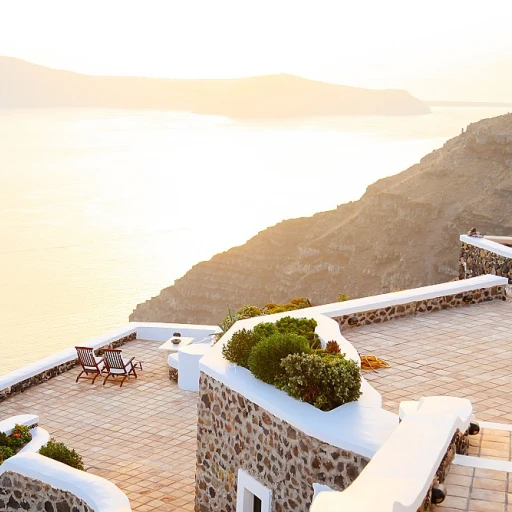

-large-teaser.webp)
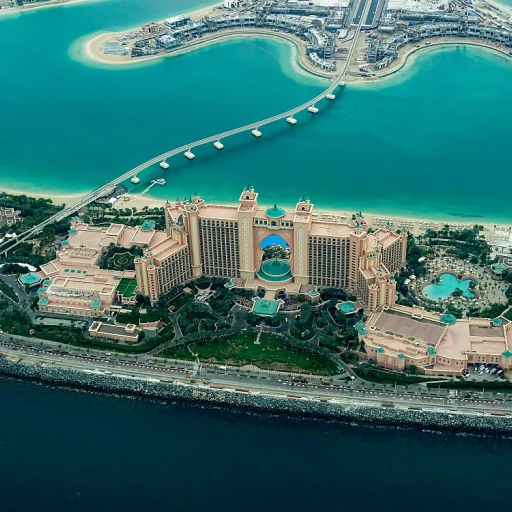
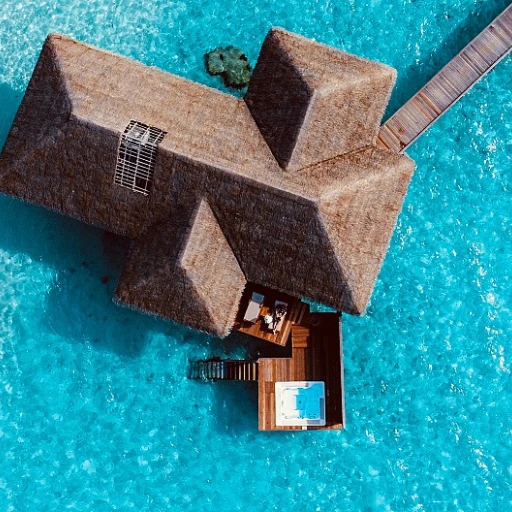
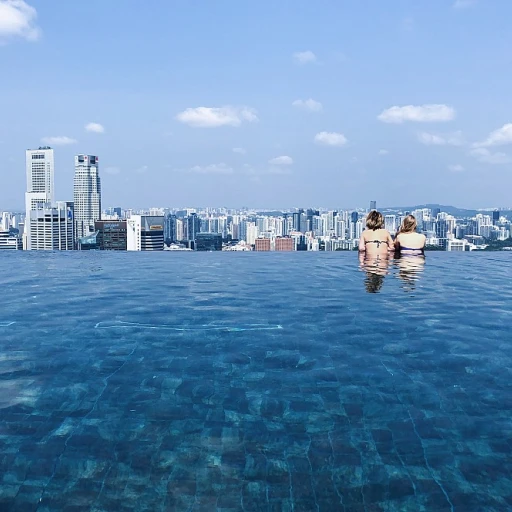


-large-teaser.webp)
